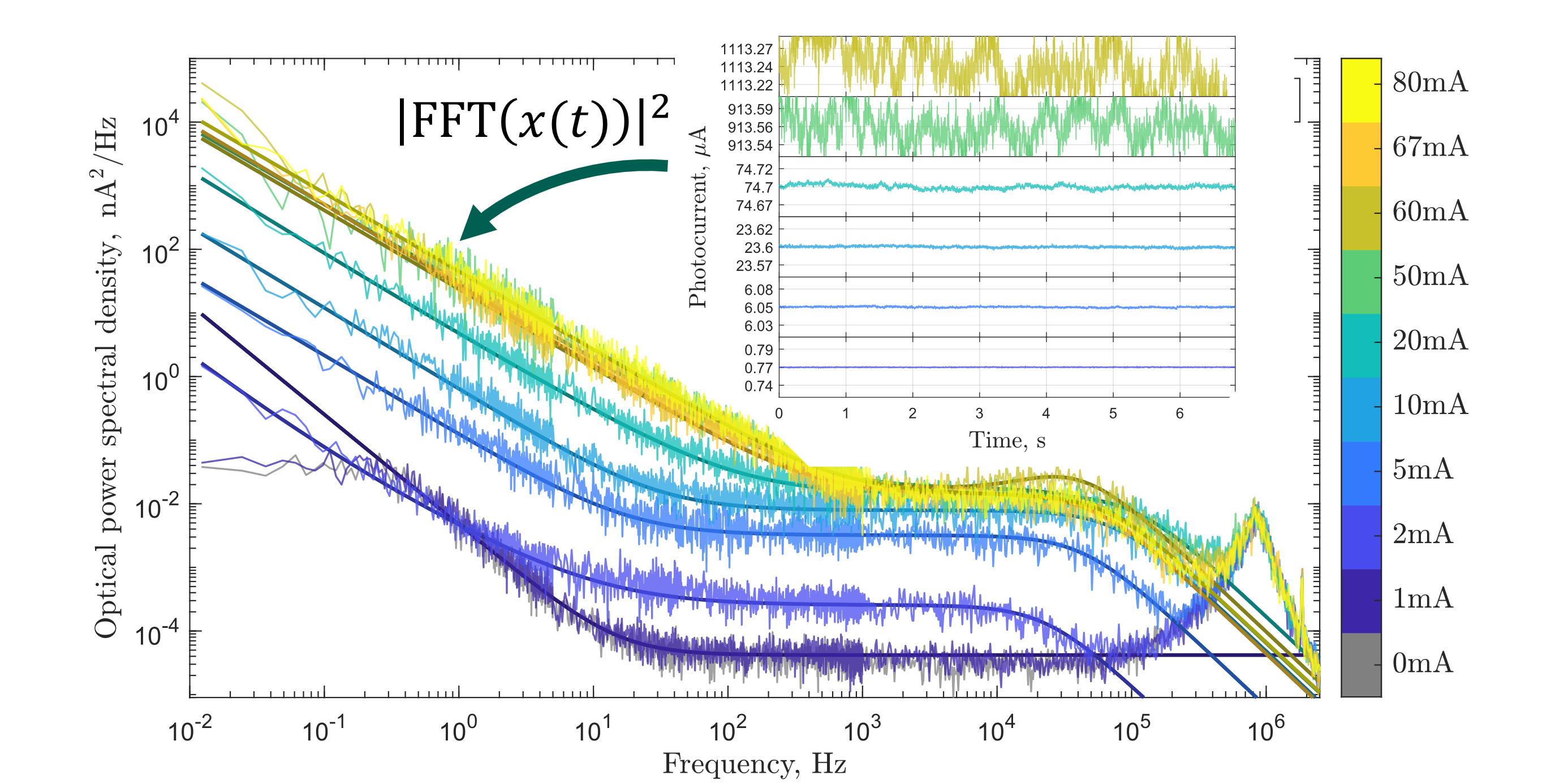Noise in LEDs
Defects in LEDs (light emitting diodes) not only reduce efficiency and lifetime, but also generate noise. One of our research areas is the analysis of noise in various LED structures. The general motivation for such an analysis is that by investigating the noise, conclusions can be drawn about the cause and thus about defect structures in the LEDs. In noise analysis, we distinguish between two categories: macroscopic and microscopic investigations.

The macroscopic noise analysis focusses on optical intensity fluctuations of the whole device. If a sample hase many defects, it will affect the macroscopic signal. As a result a complex noise spectrum generated, which is hard to analyse. On the left side an example noise spectrum is presented. One of the greatest challenges with this type of measurement is to generate a measurement environment with little external interference, as ambient noise has a strong effect on the measured noise spectrum. Analyzing and understanding the recorded spectra also requires a lot of time and effort. Various models and current as well as temperature dependencies are defined in order to subsequently identify the individual noise components.

Microscopic noise analysis investigates the luminescence behavior of a small area of LED structures. By using the µ-PL setup such microscopic noise analysis can be performed in our laboratories. The periodic change of a local spot is investigated, which is called blinking effect. In most cases only a few so-called blinking spots can be detected by looking at a standard deviation map. These single spot correspond to individual dominating defects in the device structure. If a blinking spot is detected on the standard deviation map, its local intensity change can also be displayed in a signal diagram, which is recorded using a photomultiplier. A Fourier transformation can then be performed to generate a power spectrum to which the models already used in the macroscopic analysis can be fitted. The microscopic analysis generally provides a better understanding of individual processes in the analyzed structure.
After different areas of the sample have been examined with microscopic analyses, a macroscopic analysis can also be performed to determine the overall effect of the noise behavior. A combination of both macroscopic and microscopic analyses provides the best possible understanding of the noise behavior.
latest theses:
O. Liu: Lokale Fluktuationen der Lichtemission von InGaN Quantenfilmen und LEDs, Bachelorarbeit
D. Bohomolov: Optical and electrical noise investigation in red, green and blue LEDs, Bachelorarbeit
latest publicationen:
D. Bohomolov, et al. SPIE - Gallium Nitride Materials and Devices XIX. (2024), "Optical and electrical noise in RGB LEDs in the mHz to kHz frequency band"
